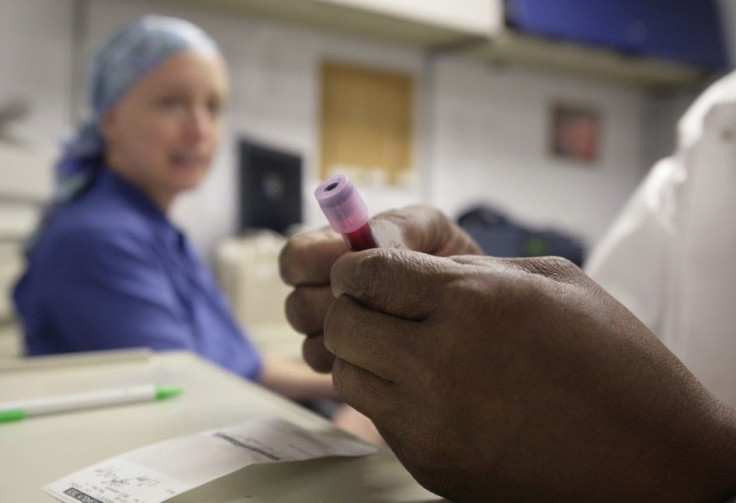The ‘Cancer Moonshot’ May Succeed — If We Don't Weaken Patent Protections [Opinion]

Joe Biden's cancer moonshot might not be as far-fetched as you think.
Why? Because multiple U.S. agencies recently took steps to make the cancer moonshot a reality by further strengthening patent rights.
Earlier this summer, the Patent and Trademark Office created an expedited review process for certain patent applications covering "immunotherapies" — new cancer treatments that re-engineer the body's immune system to attack tumors. Within days, the National Institutes of Health rejected a petition that urged the agency to use "march-in" rights to effectively take back the patent on a prostate cancer drug: It would've had a chilling effect on the development of new drugs if such blatant government overreach was implemented.
Fortunately, both moves reaffirmed researchers' faith in the patent system, giving companies the confidence to continue investing in cancer research and countless other medical innovations. By maintaining strong patent protections, government officials can ensure such research continues to make the world a better place.
The landmark 1980 Bayh-Dole Act determined licensing parameters and restrictions that allow universities and other non-profit organizations to retain the patent rights in inventions developed by their inventors using federal funding. Championed by Sens. Birch Bayh (D-IN) and Bob Dole (R-KS), this law allows and encourages universities that receive government funding for basic research to patent their discoveries and then license them to private companies for development and commercialization. The "march-in" provision was included to deter a company from failing to develop a product. Fortunately, Bayh-Dole has been so successful in spurring the development of thousands of innovative products that march-in rights have never been exercised.
For context, before 1980, the federal government owned the patents resulting from publically-funded research. Because the government rarely licensed its patents to private companies and startups, these firms had no incentive to turn patented designs and ideas into real-world products for the American public. Not a single drug was developed based on research funded by the federal government.
The Bayh-Dole Act corrected the incentive structure and resulted in a flood of innovation. Since it became law, research institutions have been awarded over 80,000 patents, including for technologies such as MRI imaging and lasers. By licensing these patents to private companies, universities and non-profits have helped grow the economy by over a trillion dollars, create 10,000 startup companies, and support nearly 4 million jobs.
The architects of Bayh-Dole created march-in rights as a safety measure, reserving them for situations in which a patent holder sits on a needed discovery and refuses to turn it into a marketable product. March-in powers were never intended as a tool to regulate prices, which is how petitioners want the NIH to use the rights.
The Founding Fathers understood the power of intellectual property — that's why they enshrined patent protections in the Constitution. They knew that giving people and businesses the right to monetize their own ideas would guarantee centuries of American prosperity.
Weakening patent rights, so breakthrough inventions can be copied with impunity, would have devastating consequences on American innovation.
The majority of university inventions are licensed and optioned by startups and small companies. Such companies take huge risks to develop these early-stage discoveries, usually investing many times more than the government spent on the original research.
Scaling back IP protections, thus allowing competitors in the door earlier, might temporarily lower prices — but only at the more fundamental cost of repealing the financial incentive to create. Developers would have a much harder time attracting investment capital. Innovation would slow to a crawl.
Unfortunately, the controversy over IP rights extends well beyond march-in petitions.
The Department of Education could soon require inventors of educational software to release their products via open licensing. In many instances, an open license would hamper developers' ability to attract the venture capital needed to produce tested, reliable educational software.
Some lawmakers in Connecticut recently sought to eliminate one university's non-profit tax status for research facilities that license their discoveries for commercial gain. That would effectively slap researchers with a big new tax bill.
Perhaps most egregiously, a powerful United Nations panel tasked with expanding medical access in poor countries will soon release a set of policy recommendations expected to include calls to loosen or even eliminate some IP rights.
Expensive research cannot take place without strong intellectual property rights. Everyone wants better drugs and the newest communications technologies. But no one will benefit from those innovations unless businesses have an incentive to develop them. Undermining patent protections — whether via march-in rights, mandatory open licensing, or outright weaker patent laws — would strangle the golden goose that has brought prosperity and improved health to millions of Americans and billions more around the world.
David Winwood is president of the Association of University Technology Managers.
© Copyright IBTimes 2025. All rights reserved.





















